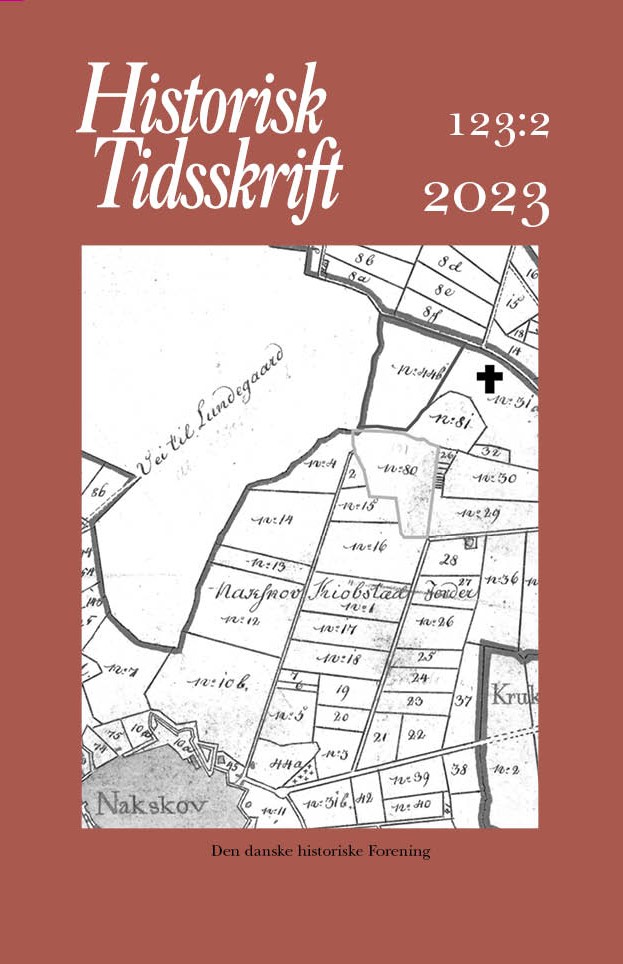Territorialisering og ejendomsret. Nakskov by kontra grevinde Reventlow 1745-54
DOI:
https://doi.org/10.7146/ht.v123i2.141941Resumé
Territorialization and property: The city of Nakskov vs. Countess Reventlow 1745–1754
Historians of Danish rural history have long recognized that property rights in early modern times (in Danish fællesskabstiden) were highly complicated, often with a multilayered and collective structure that differs fundamentally from the modern norm of individual and absolute rights. Less has been written on the territorialization of property, i.e., how property rights were manifested in rural space. While some scholars have pointed out a general historical connection between property rights regimes and their spatial manifestation – for instance, in the sense that the consolidation of individual property rights went hand in hand with the emergence of stronger, more clearly defined property boundaries – the relation has generally been depicted as one of simple causation. However, based on a case study of a commission (kommissionsdomstol) established to decide the case between the borough of Nakskov and Countess Ida Margrethe von Reventlow in the year 1752, the present article shows that the interrelation between the legal and spatial dimensions of property was neither historically unidirectional nor a question of simple mutual reinforcement. Thus, the two dimensions could clash, with solutions being contingent upon the success of the concrete territorialization practices of the agents involved. In this case, the borough failed to provide a territorial shape to certain property rights, resulting in an imbalance between pre-existing rights and spatial arrangements.
Downloads
Publiceret
Citation/Eksport
Nummer
Sektion
Licens
Ophavsret til bidrag i Historisk Tidsskrift tilhører forfatterne og Den danske historiske Forening som udgiver af Historisk Tidsskrift. For illustrationer gælder den ophavsret, som står anført i billedteksten. Ophavsretslovens almindelige bestemmelser gælder, hvilket vil sige, at ophavsretten gælder i 70 år efter forfatterens død. Bidrag i Historisk Tidsskrift må derfor, med forbehold for en ”moving wall” på tre år, frit downloades, læses, gemmes, anvendes og citeres (med kildeangivelse) i privat og videnskabelig sammenhæng, men de må ikke helt eller delvis genudgives af tredjepart, heller ikke i redigeret form, uden tilladelse fra forfatterne og Den danske historiske Forening. Henvendelse skal i så fald rettes til Historisk Tidsskrifts redaktion på histtid@hum.ku.dk.





